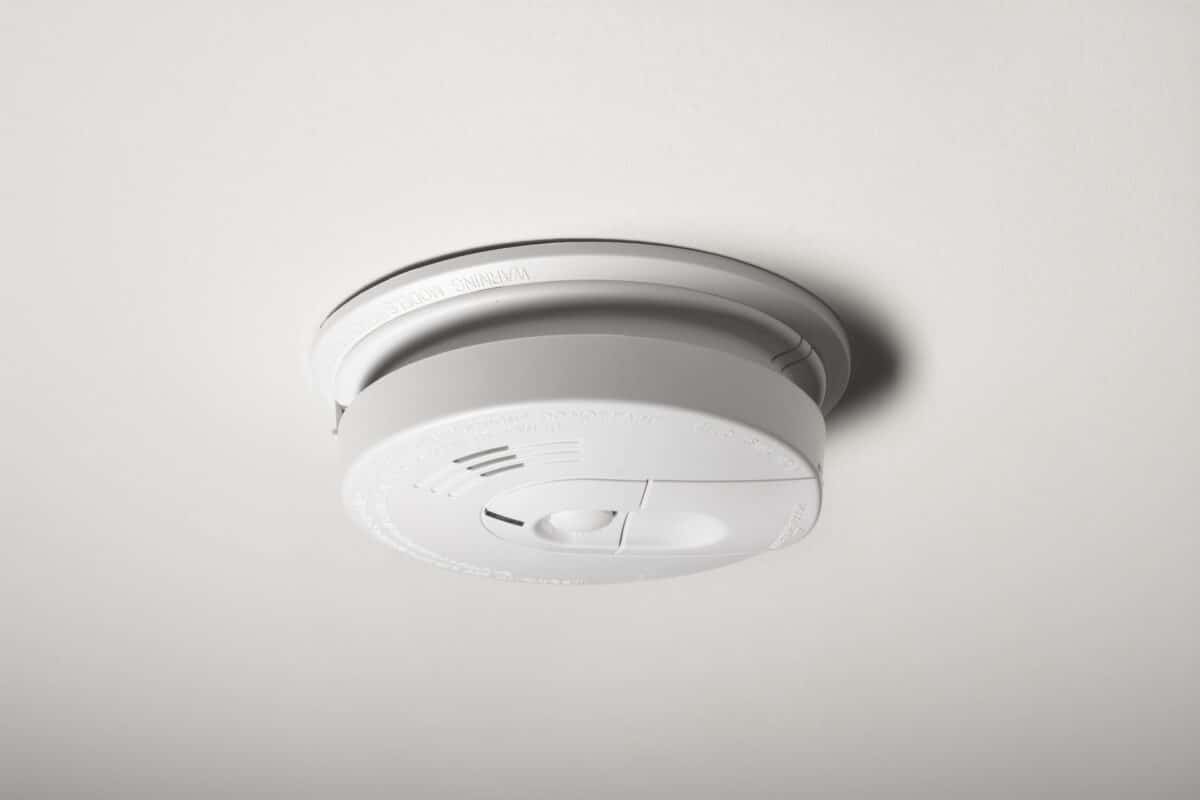Optimal Placement of Smoke Detectors in Your Home

Ensuring the safety of your home in Florence, SC, involves several critical steps, with the placement of smoke detectors being paramount. These devices are essential for early detection of fires, providing residents with the necessary warning to evacuate safely. Strategic installation of smoke detectors can significantly enhance their effectiveness, safeguarding both life and property. By understanding the optimal locations for these devices, homeowners can ensure comprehensive coverage throughout their living spaces.
In many homes, the question isn’t just about having smoke detectors but rather where to place them to maximize safety. The guidelines for placement can vary slightly depending on local codes and the layout of your home. For instance, it’s advisable to install smoke detectors on every level of the home, including the basement and near all sleeping areas. This ensures that no matter where a fire starts, the alarm can be heard by everyone in the house.
Additionally, special considerations should be taken for areas like kitchens and garages in Quinby, SC. These locations can be prone to false alarms due to normal smoke or fumes from cooking and automotive work. Thus, it’s crucial to place smoke detectors at a sufficient distance from these sources to reduce false alerts while still maintaining effective monitoring.
By integrating smoke detectors into your home safety plan, you not only comply with local safety codes but also create a safer living environment. Each home has unique features, and understanding these can help tailor smoke detector placement to meet specific needs. In the following sections, we will explore detailed strategies for placing smoke detectors effectively in various areas of your home, ensuring you and your family are alerted promptly in the event of a fire.
Understanding the Importance of Smoke Detectors
Understanding the importance of early fire warning systems cannot be overstated, especially when considering the safety of your home in Florence, SC. These safety devices play a crucial role in identifying the initial signs of a fire, giving you and your family vital time to respond and evacuate. More than just making noise, they offer an essential layer of protection that can be life-saving. Their performance, however, relies heavily on correct placement and consistent upkeep.
In Quinby, SC, as in other communities, local codes often specify how and where these devices should be installed. These regulations are crafted to ensure maximum effectiveness during a fire emergency. For example, placing one in each bedroom and in the hallway outside sleeping areas significantly enhances household safety. Adhering to these guidelines not only keeps you within legal requirements but also strengthens your home’s overall protection.
Technological advancements have brought a variety of options for home fire alert systems. Some models are particularly sensitive to fast-flaming fires, while others are better suited to catching smoldering smoke. Selecting the right type depends on the design of your home and the potential risks in different areas. Customizing your choices ensures each part of the house is well-covered.
Lastly, regular maintenance is key to ensuring these devices function properly. Routine testing and battery replacement are essential to keeping your fire alert system reliable. Staying informed and proactive about upkeep not only prolongs their effectiveness but also ensures your household safety measures remain in top condition. With the right knowledge and attention, residents of Florence and Quinby can enjoy greater peace of mind and a safer living space.

Photo from iStock – Credit: BrianAJackson
Types of Smoke Detectors and Their Best Locations
When considering the types of fire detection devices available, it’s crucial to match the right technology to the appropriate locations within your home. Ionization models are highly effective at sensing fast-burning fires and are best suited for areas like living rooms and offices, where electrical equipment might overheat. Conversely, photoelectric units excel at identifying smoldering fires, making them ideal for bedrooms and hallways where overheated wires or smoldering fabric could pose risks. By understanding these distinctions, homeowners in Florence, SC, can create a more responsive and efficient safety system.
In addition to selecting the appropriate type, placement plays a pivotal role in fire protection. For example, photoelectric devices are recommended near kitchens and bathrooms to minimize false alarms caused by steam or cooking emissions. However, they should not be installed directly inside the kitchen or above cooking appliances. Thoughtful positioning helps maintain effectiveness without causing unnecessary disturbances, ensuring constant and reliable protection against potential fire hazards.
It’s also important to ensure coverage across every level of your home, including the basement and attic, if they are accessible. In multi-story houses, placing a unit near stairwells on each floor helps detect smoke as it rises, offering early alerts no matter where a fire begins. For residents in Quinby, SC, this strategy ensures comprehensive coverage and enhances safety throughout the home.
Finally, ease of maintenance should not be overlooked during installation. Devices should be installed within easy reach or outfitted with features like long-life batteries or hardwired connections to simplify upkeep. Routine testing and occasional cleaning are essential to keeping your system in working order. Staying on top of maintenance not only ensures compliance with local safety codes but also reinforces your home’s defenses, helping to keep your family secure.
Guidelines for Smoke Detector Placement in Bedrooms
When planning the placement of fire detection devices in bedrooms, several key factors must be considered to ensure optimal safety. First and foremost, it’s essential to install one in every sleeping area. This configuration ensures that, in the event of a fire, the alert sounds directly where occupants are most vulnerable providing critical early warning. Additionally, positioning a unit outside each bedroom, particularly in adjacent hallways, helps detect smoke originating from nearby spaces before it reaches the bedrooms.
In homes across Florence, SC, it’s also important to think about installation height. Since smoke naturally rises, placing these devices on the ceiling or high up on a wall enhances their responsiveness. However, placement should avoid areas near ceiling fans or air vents, which may interfere with smoke reaching the unit. A minimum distance of three feet from such airflow sources is recommended for optimal performance.
For larger or uniquely shaped bedrooms, additional steps may be needed. If the room includes a sitting area or has a more spacious layout, adding a second device can help ensure comprehensive coverage. This approach is especially beneficial for residents of Quinby, SC, where homes may vary in size and configuration. Care should also be taken to position devices away from large furniture pieces that could obstruct smoke movement.
Lastly, regular testing is key to maintaining reliability. A simple monthly test can verify that each unit remains in good working condition. This proactive habit not only strengthens overall safety but also supports adherence to recognized safety standards. By applying these best practices, homeowners can significantly increase the effectiveness of their bedroom fire detection setup, creating a safer living environment for all occupants.
Strategic Placement of Smoke Detectors in Kitchens
Placing fire detection units near kitchens requires thoughtful planning to strike the right balance between sensitivity and practicality. In Florence, SC, it’s recommended that these devices be positioned close to, but not directly within, the kitchen to prevent false alarms caused by everyday cooking. Installing them in adjoining rooms or hallways leading to the kitchen offers an effective solution this allows for the early detection of a true fire emergency without unnecessary disruptions during routine meal preparation.
The choice of detection technology also plays a key role in how well these units perform in kitchen-adjacent areas. Photoelectric sensors are generally the preferred option in this context, as they are less likely to react to minor smoke or steam generated during cooking. At the same time, they remain highly responsive to the larger smoke particles associated with smoldering fires, such as those that might result from overheated food or malfunctioning appliances. For residents of Quinby, SC, this makes photoelectric models a smart addition to any kitchen safety plan.
Equally important is the physical placement of these devices in relation to potential sources of heat and steam. To avoid nuisance alarms, they should be installed at least 10 feet away from ovens, stovetops, and other cooking equipment. This spacing helps ensure the alert system only activates during genuine fire events, avoiding confusion and alarm fatigue while preserving full functionality.
Finally, because of the increased exposure to airborne particles in kitchen zones, regular upkeep is essential. Monthly testing and periodic cleaning following manufacturer guidelines are necessary to prevent clogging and ensure reliable performance. Keeping these systems well-maintained is a key component of any home fire safety plan, especially in high-risk areas like the kitchen.
Installing Smoke Detectors in Living Rooms and Common Areas
Installing fire alert devices in living rooms and shared spaces is a vital part of protecting your home from fire hazards. These areas often serve as the heart of the household, where family members gather and spend a significant amount of time. It’s important to ensure that safety devices are positioned thoughtfully to provide effective coverage without being hindered by daily activity. For residents of Florence, SC, understanding the layout and typical usage of these spaces can help guide the most effective installation.
When selecting locations for these units in living areas, it’s best to avoid placing them near windows or doors, where drafts could interfere with detection. Instead, the center of the ceiling or a high wall location provides optimal coverage, allowing smoke from any source to be detected quickly. In larger or high-ceilinged rooms, it may be necessary to install more than one unit to ensure full protection.
For homes with open floor plans where the living room flows into other spaces such as dining or kitchen areas placement becomes even more strategic. To reduce the chances of false alarms, it’s advisable to install devices at least 20 feet away from cooking appliances. This approach is especially valuable in places like Quinby, SC, where open layouts are common, helping to ensure that alerts are triggered only by true emergencies.
Aesthetics and usability should also factor into installation decisions. Many modern fire safety devices are available in sleek, low-profile designs that can blend unobtrusively into home interiors. Equally important is accessibility for ongoing maintenance such as battery replacement and routine testing to keep systems reliable and effective. By applying these guidelines, homeowners can significantly improve fire preparedness in their living rooms and shared spaces, ensuring peace of mind for everyone under the roof.
The Role of Hallways and Staircases in Smoke Detector Placement
Hallways and staircases are critical areas in your home when it comes to the placement of smoke detectors. These areas serve as main arteries of the house, connecting multiple rooms and levels. Therefore, installing smoke detectors in these locations ensures that smoke from fires in adjacent areas is detected quickly and efficiently. For residents in Florence, SC, it’s essential to consider the layout of these passageways to optimize smoke detector effectiveness.
In homes with multiple floors, staircases are particularly crucial for smoke detection. Smoke has a natural tendency to rise, so placing smoke detectors near the top of the staircase on each floor can help in detecting smoke as it travels upwards. This strategy is vital for early detection and can significantly increase the time available for occupants to evacuate safely. It’s a practice that aligns well with safety recommendations and helps in maintaining a secure environment.
For hallways, especially those outside bedrooms or connecting different sections of the house, the placement of smoke detectors should be strategic. It is advisable to install these devices in the center of the hallway ceiling or at least as close to the center as possible. This placement helps in maximizing the area of coverage, ensuring that no part of the hallway is left unprotected. Residents of Quinby, SC, will find that such an arrangement enhances the responsiveness of smoke detectors to fires originating from any adjacent room.
Lastly, while installing smoke detectors in hallways and staircases, ensure they are placed away from any potential air drafts from windows or ventilation systems, which could interfere with their operation. Regular maintenance, such as testing and cleaning the smoke detectors, is also crucial to ensure they remain in good working order. By adhering to these guidelines, you can significantly bolster the safety of your home, ensuring that hallways and staircases are well-monitored against the threat of fires.
Smoke Detectors in Basements and Attics: Special Considerations
When considering the installation of smoke detectors in less frequented areas like basements and attics, special considerations must be taken into account. Basements, often used for storage or as additional living spaces, can be the starting point for fires due to heating systems, electrical wiring, or seldom-used appliances. In Florence, SC, it’s crucial to place smoke detectors near potential sources of fire in basements to ensure early detection and adequate warning time for evacuation.
Attics pose a different set of challenges, primarily due to their typical use for storage and their location at the top of the house. Since heat rises, attics can get significantly hotter than other parts of the home, which can affect the functionality of smoke detectors. It’s advisable to use smoke detectors that are specifically designed to withstand higher temperatures and dust levels. This ensures that they remain effective even in the extreme conditions that attics often present.
In both basements and attics, the placement of smoke detectors should be strategic to avoid obstructions like stored items or insulation that could block smoke from reaching the detectors. In Quinby, SC, homeowners should ensure that smoke detectors are installed in clear, central locations within these areas. This placement helps maximize the coverage area and enhances the detector’s ability to sense smoke quickly.
Lastly, maintenance of smoke detectors in basements and attics is paramount due to the less frequent traffic in these areas, which might lead to neglect. Regular testing and dusting of these detectors are essential to ensure they are always ready to perform their critical function. By adhering to these guidelines, residents can significantly enhance the safety of every corner of their home, ensuring that even the most secluded areas are monitored for fire safety.
Compliance with Local Fire Safety Codes and Regulations
Complying with local fire safety codes and regulations is essential when installing smoke detectors in your home. In Florence, SC, these regulations are designed to ensure that every residence has adequate protection against fires. It’s crucial for homeowners to understand and adhere to these codes to not only ensure safety but also to avoid legal penalties. Local fire safety codes specify the types and placements of smoke detectors required in various parts of the home, ensuring optimal functionality during emergencies.
In addition to state and national guidelines, local jurisdictions like Quinby, SC, may have specific requirements that address unique regional risks or building styles. These might include mandates on the number of smoke detectors per square foot or rules about their placement relative to bedrooms and kitchens. Homeowners should consult with local fire safety officials to ensure their smoke detector setup meets all local requirements. This proactive approach helps in maintaining a safe environment and in fostering good relationships with local safety authorities.
For those unsure where to start, many communities offer resources and services to help residents comply with fire safety codes. In some cases, local fire departments conduct home visits to advise on the placement of smoke detectors and to provide general fire safety tips. Taking advantage of such services can be invaluable, particularly for new residents or those in older homes that might need updates to meet current standards.
Lastly, staying updated with changes in fire safety regulations is important as codes can evolve. Regularly reviewing your smoke detector system and ensuring it meets the latest standards is a key part of maintaining home safety. By keeping informed and compliant, residents of Florence and Quinby can enjoy peace of mind, knowing their homes are protected by properly installed and maintained smoke detectors. This not only enhances personal safety but also contributes to the well-being of the entire community.

Photo from iStock – Credit: roobcio
Frequently Asked Questions
What are the best locations for smoke detectors in a home?
To ensure maximum safety, smoke detectors should be strategically placed in several key areas of your home. It is crucial to install smoke detectors on every level of your home, including the basement and near sleeping areas. Additionally, placing smoke detectors inside each bedroom and outside each separate sleeping area enhances early detection and safety. Avoid installing smoke detectors near windows, doors, or ducts where drafts might interfere with their operation, ensuring they function effectively in detecting smoke.
How many smoke detectors are needed in an average-sized house?
The number of smoke detectors required in an average-sized house depends on the layout and size of the home. Generally, it is recommended to have at least one smoke detector on each level, including the basement and attic, if applicable. For enhanced safety, install a smoke detector inside each bedroom and in the main living areas. Adhering to these guidelines ensures that smoke detectors are well-placed to alert residents promptly in case of fire.
What types of smoke detectors are most effective for residential use?
When choosing smoke detectors for residential use, it’s important to consider the two main types: ionization and photoelectric. Ionization smoke detectors are generally faster at detecting flaming, fast-moving fires, while photoelectric detectors are better at sensing smoldering, slow-burning fires. For comprehensive protection, many safety experts recommend using dual-sensor smoke detectors, which combine both technologies. This ensures that your home is well-equipped to alert you to any type of fire, enhancing your safety and response time.
How often should smoke detectors be tested and maintained?
To ensure the reliability of smoke detectors, it’s recommended to test them monthly by pressing the test button until the smoke alarm sounds. This simple check confirms the operational status of the smoke detectors and alerts you to any malfunctions. Additionally, replace the batteries at least once a year or as soon as the low-battery signal sounds, ensuring uninterrupted protection. Regular maintenance, including vacuuming the dust from around the smoke detectors, can prevent false alarms and extend the device’s life.
What are common installation mistakes to avoid with smoke detectors?
When installing smoke detectors, several common mistakes can compromise their effectiveness. One frequent error is placing smoke detectors too close to kitchens or bathrooms, where cooking smoke or steam can trigger false alarms. It’s also crucial to avoid installing smoke detectors in corners or near windows and doors, as these locations can prevent smoke from reaching the sensors promptly. Ensuring that smoke detectors are mounted on ceilings or high on walls, as smoke rises, will enhance their ability to detect smoke quickly and efficiently.
















